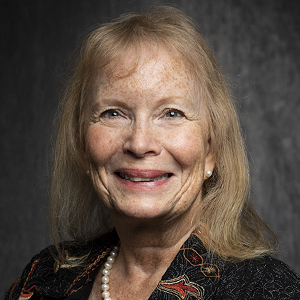
QI initiatives can play a role
American Board of Medical Specialties (ABMS) Member Boards can take several steps to eliminate health and health care disparities, from creating awareness about them to making the elimination of health inequities an expected competency, according to speakers at the ABMS Conference 2020 – Virtual. Moreover, quality improvement (QI) initiatives can be instrumental in facilitating such efforts.
ABOG begins by examining past

The American Board of Obstetrics and Gynecology’s (ABOG’s) approach to eradicating disparities began with a strategic plan set by its Board of Directors (BOD) in 2016, noted Susan Ramin, MD, ABOG’s Associate Executive Director. It included examining the specialty’s past and present as well as intentionally focusing on the collaborative integration of diversity, equity, and inclusion (DEI).
“The specialty’s history is not one that we can be proud of,” she said. There has been a broad range of injustices rooted in racism, oppression, and marginalization. Among the examples Dr. Ramin cited were gynecologic procedures performed on enslaved Black women without consent and women of color being subjected to sterilization and given high-dose hormonal contraception without consent. Additionally, women of color, single women, and same sex couples have had, and continue to have, barriers to obtaining health care, she said.
Disparities in health outcomes for women are pervasive, Dr. Ramin stated. Black women have a three- to four-fold higher chance of dying during pregnancy or postpartum than white women. Compared to white women, Black women have higher rates of breast cancer deaths, and Black and Hispanic women have higher rates of cervical cancer deaths.
Similarly, disparities in access to health care services exist, she said. For example, Black and Hispanic populations are less likely to receive birth control than white populations. American Indian, Asian, and Alaskan Native women are less likely to get a mammogram than white or Black women.
Women of color are underrepresented in residency programs as well. Of the 5,453 residents in programs in 2018-19, slightly more than 80 percent were women. However, the vast majority were white or Asian, Dr. Ramin noted. Only seven percent were Black. Obstetrics/gynecology subspecialties are even less heterogenous, she said.
ABOG is forming an internal task force made up of leadership and staff members plus an ad hoc committee of BOD members charged with developing an action plan to:
- Facilitate public acknowledgement and awareness among ABOG stakeholders of the role that racism has played in the specialty’s history.
- Determine and operationalize specific actions that will further facilitate tangible and positive progress toward equity and inclusion throughout the initial and continuing certification processes.
- Collaborate with obstetrics/gynecology specialty organizations and societies to address racism and biases across women’s health care and help to facilitate concrete change and equitable patient outcomes.
In 2018, ABOG began studying unconscious bias in its Certifying Examination process. The following year, all specialty and subspecialty examiners were trained to identify and manage unconscious bias. This training is now a standard requirement for all examiners on a yearly basis.
A few years ago, ABOG began efforts to increase awareness of racial disparities in women’s health through its continuing certification program. The board began offering topical articles to its diplomates and in 2021, ABOG will provide two additional articles as mandatory reading for all diplomates in the 2021 continuing certification process. The board also grants continuing certification credit for diplomates who serve on such initiatives as state-level perinatal quality collaboratives and participate in local QI projects, for example, that strive to reduce racial/ethnic disparities in peripartum bundles.
Dr. Ramin concluded by noting that ABOG recently joined 18 other specialty societies and organizations in committing to collaborate to change the culture of medicine and eliminate racism and health disparities within the specialty. “As a certifying organization, ABOG is obligated to ensure women receive equitable, quality care regardless of their race or ethnicity,” she said.
ABP emphasizes QI, medical knowledge

Similarly, pediatricians see numerous health disparities in children of color, noted David G. Nichols, MD, MBA, President and Chief Executive Officer of the American Board of Pediatrics (ABP). The health of all children under the age of 18 in racial and ethnic groups continues to lag compared to white children, according to data from the Annie E. Casey Foundation’s Kids Count and Department of Health and Human Services. About twice as many children of color are not as healthy as non-Hispanic white children, Dr. Nichols said. The data are based on a parent-reported national survey of 50,000 children.
The mortality rates were higher in premature African American and Hispanic infants than white infants between 2006 and 2012, according to a study of more than 200,000 newborns conducted by the Vermont Oxford Network (VON). The rates have narrowed through 2017, however, following a QI intervention implemented by this learning collaborative, which at the time of the study consisted of nearly 800 centers in the United States and more than 1,300 neonatal intensive care units worldwide.
Basically, the VON centers deconstructed each component of care that infants receive after premature birth and implemented a “disparities PDSA cycle,” Dr. Nichols explained. The cycle went as follows:
- Plan to eliminate disparities
- Do QI interventions to decrease disparities
- Study outcomes stratified by race and ethnicity
- Act to improve on the results
ABP issued continuing certification credit to the neonatologists participating in this study, which demonstrates “QI as a powerful vehicle to eliminate health care disparities,” he said. “It is no longer acceptable to look at overall outcomes for children or any other group of patients in today’s environment when we are aware of disparities,” Dr. Nichols added.
Studies have shown that the explosive growth of type 2 diabetes, previously considered an adult disease, is reaching epidemic proportions in teens of color, he said. It stems from the obesity epidemic with food deserts and the lack of safe playgrounds in communities of color contributing to the problem. Interestingly, a 2016 study showed that pediatric residents lack confidence in the prevention and management of obesity. Pediatric residents are less knowledgeable and comfortable treating and preventing obesity than they are discussing the issues of being overweight and obesity with teens and families, Dr. Nichols said, adding that there is an opportunity to mitigate this type of result.
Certifying boards, the Accreditation Council for Graduate Medical Education (ACGME), and training programs have an opportunity to work together to help trainees gain the knowledge and confidence they need to eliminate disparities, Dr. Nichols concluded. Certifying boards must step up to make the elimination of disparities an expected competency for board certified physicians, test specific knowledge needed to eliminate disparities, eliminate biased exam items using psychometric techniques, and diversify the membership of all committees. ACGME is in a position to assess and eliminate structural racism in academic health centers where training takes place. As part of its Milestones program, ACGME is capable of tracking QI and should add the elimination of disparities as a new milestone. Training programs should use competency-based medical education and assessment tools to provide multisource feedback to trainees on the sub-competencies needed to eliminate disparities and expect that trainees graduate with such competencies.
QI initiative supports systemwide efforts

Improving the knowledge, attitudes, and beliefs of individuals around health equity as well as developing and using equity measures for improvement are key challenges facing health care organizations, noted Joel Tieder, MD, MPH, Associate Professor of Pediatrics at Seattle Children’s Hospital. He discussed how QI initiatives can support these efforts.
Board certified physicians need to change their practice (knowledge, attitudes, and beliefs) around race and equity as it relates to the workplace and patient care, Dr. Tieder noted. While it is part of their professional obligation, this type of change is a personal journey that can be difficult for many, he said.
To lead these efforts, the Seattle Children’s ABMS Portfolio Program implemented a QI project known as GATHER, which stands for Generate and Teach Health Equity Routinely. The global aim of the project, which is in its fourth year, is to reduce health care inequities and help advance a DEI culture in the hospital – a systemwide goal. The specific aim, however, is to improve DEI behaviors, he explained. The QI intervention involved participating in a DEI training session and responding to a self-reflection survey of DEI behaviors. During small group discussions fashioned after the PDSA cycle, participants discussed barriers to achieving DEI behaviors and how to overcome them. Participants also attended hospital-sponsored DEI continuing education events. The survey is repeated twice a month and responses are used to measure improvement.
Survey items include When I perceived a cultural barrier, I took steps to break it down and I have considered how the concepts of privilege and oppression may play in my relationships with patients/families. Items such as I feel comfortable talking openly about DEI in meetings, presentations, huddles, etc. were added “to show improvement” as the initiative continued, Dr. Tieder said.
At baseline, participants rarely had top-box responses (i.e., always or often) to the survey items. Only one out of five surveyed behaviors were in the top-box responses more than half the time. The latest post-survey responses show that more than 75 percent of participants were comfortable answering all six questions positively 79 percent of the time. Despite the data being self-reported, there is ample evidence to suggest that the participants’ learning translated into practice, he said.
Regarding equity measurement, the challenge is how to scale an intervention like this one. A disparity dashboard can help create awareness around the problem, prioritize strategic decision-making, identify barriers, implement systems improvements, and improve equitable health outcomes, among other benefits Dr. Tieder cited. They are an effective tool for all types of heath care organizations, including ABMS Member Boards, he added. After developing a quality dashboard, next steps include stratifying key quality measures by race, ethnicity, and language; standardizing data collection, analysis, and presentation by trained staff; and using self-reported race or ethnic-related data.
Dr. Tieder concluded by offering best practices when using equity data. Among them are to be transparent, responsible, and accountable. Interventions should include an equity, anti-racist, and inclusive focus. They should be monitored and evaluated constantly to ensure they do not increase the disparity. Prepare for missteps and be humble, open, and committed to change and growth. Be informed and have a plan to discuss data and address questions, such as statistical significance and validation.
ABMS would like to thank Tara Montgomery, a public health advocate, researcher, and communicator, and an Adjunct Lecturer in Health Communication at Tufts University Medical School, for serving as moderator for this session.
© 2021, American Board of Medical Specialties.
